The stone, nearly 3 billion years old, was discovered in Tran Yen district (Yen Bai province) and is on display at the Hanoi Museum.
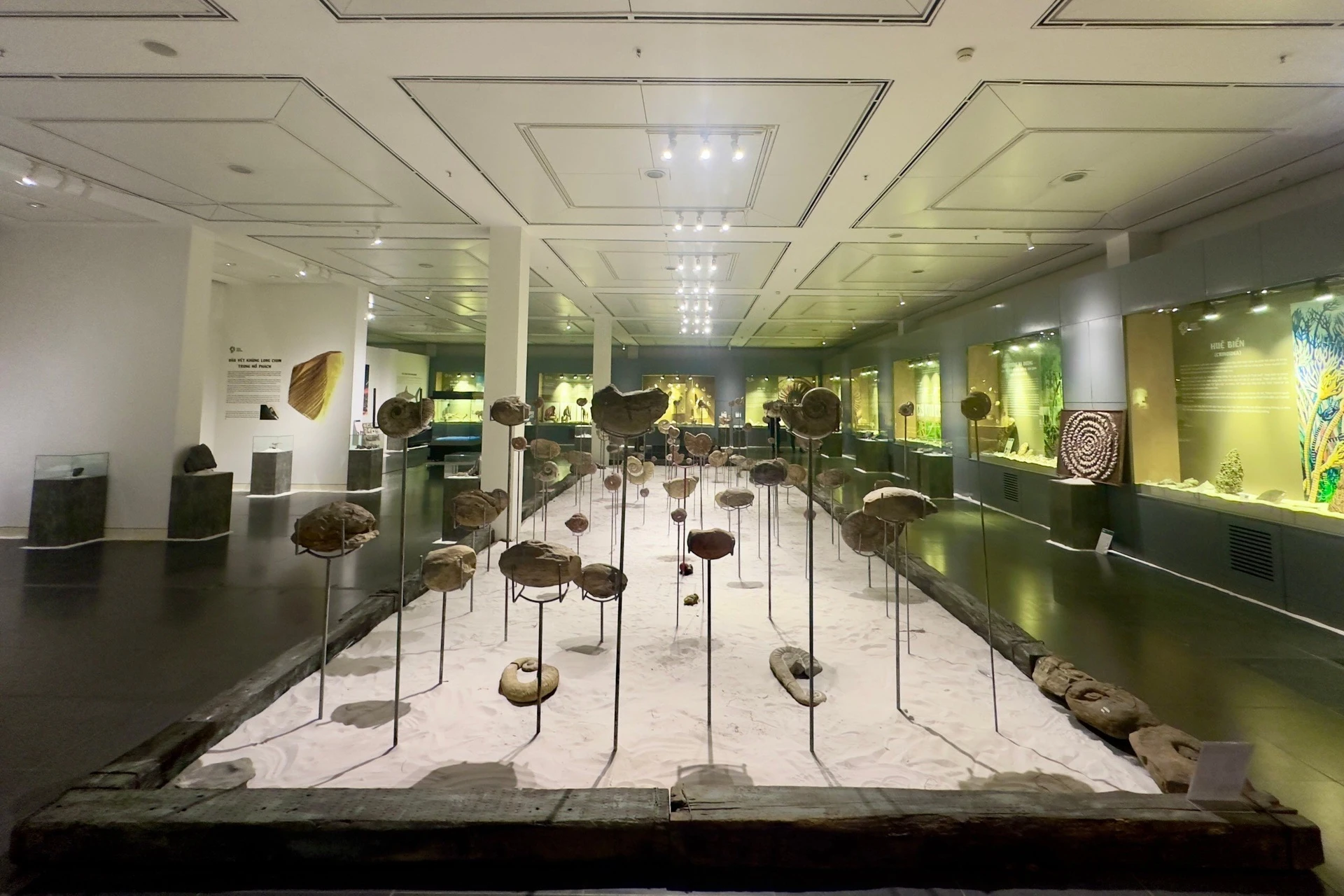 |
Hanoi Museum (Nam Tu Liem District, Hanoi) is displaying a special exhibition called “Earth formation history through fossil collection” jointly organized by Hanoi Museum and Hanoi Fossil Museum. Here, many fossil samples are dated from millions to billions of years. |
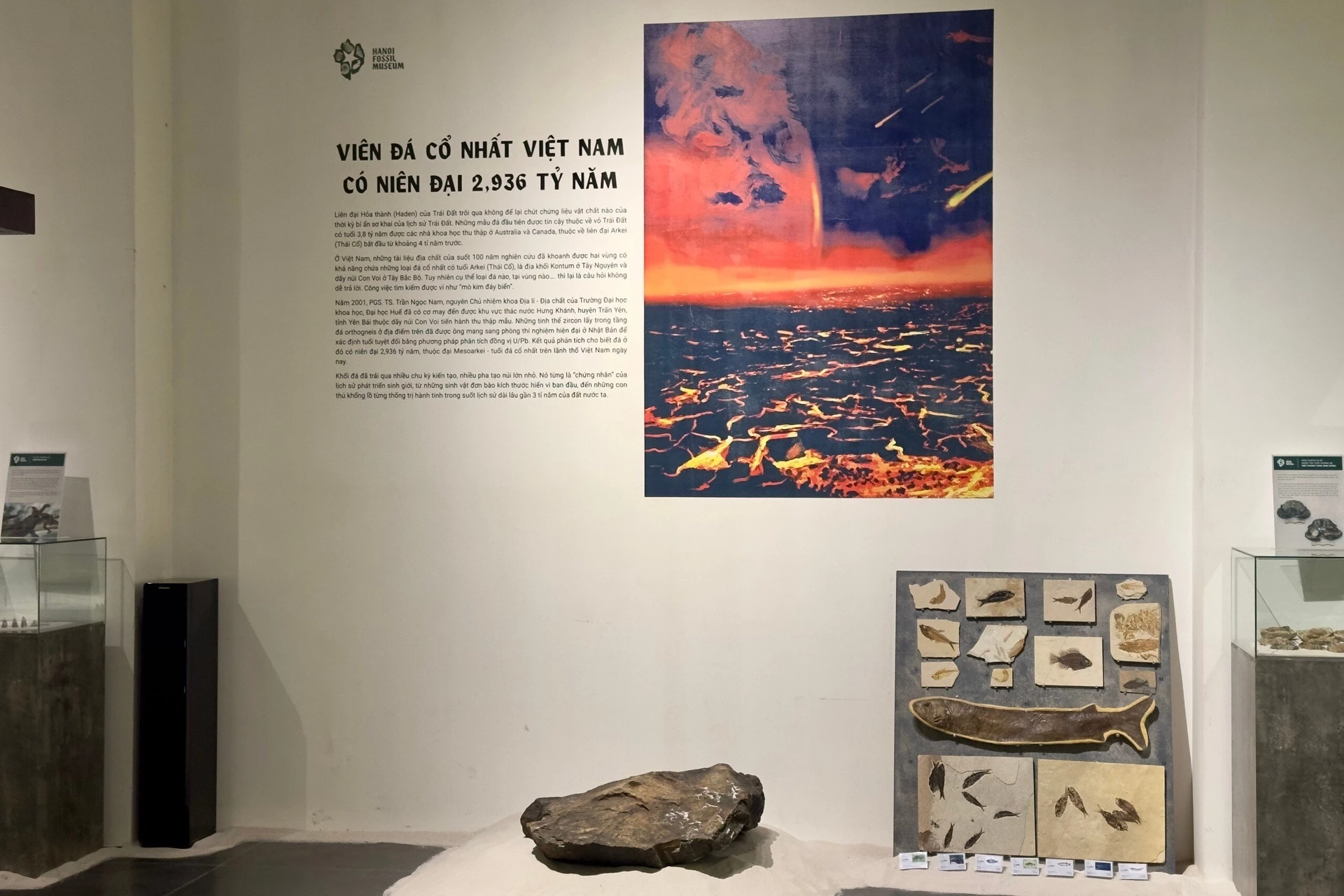 |
The highlight of the exhibition is the oldest stone in Vietnam, which is determined to be 2.936 billion years old. In Vietnam, many geological documents through hundreds of years of research have identified two places containing ancient Arkean rocks, namely the Kon Tum block in the Central Highlands and the Con Voi mountain range in the Northwest. |
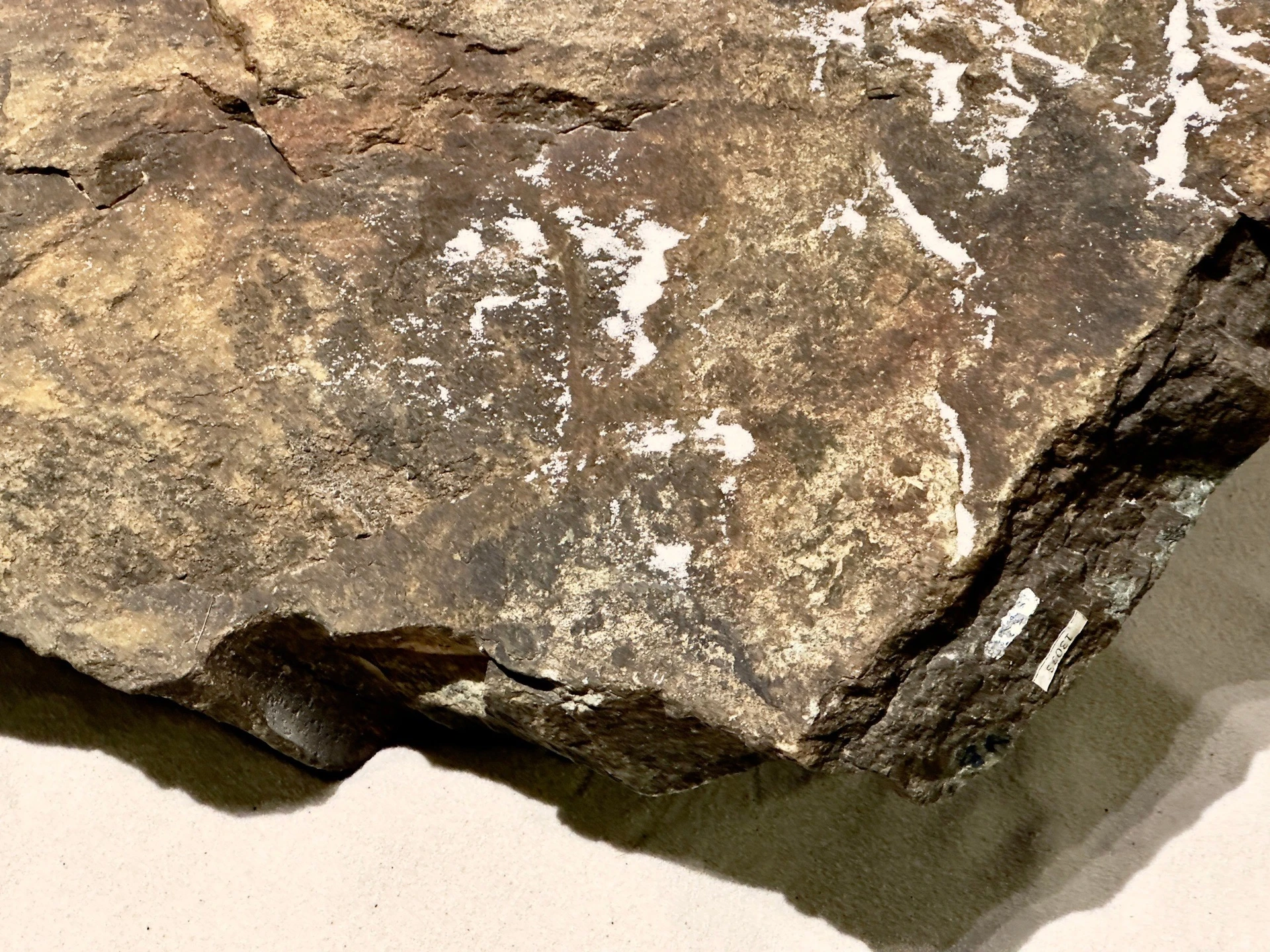 |
In 2001, this stone was discovered by Associate Professor, Dr. Tran Ngoc Nam (former Head of the Department of Geography - Geology, University of Science , Hue University) in the Hung Khanh waterfall area, in the Con Voi range (Tran Yen district, Yen Bai province). |
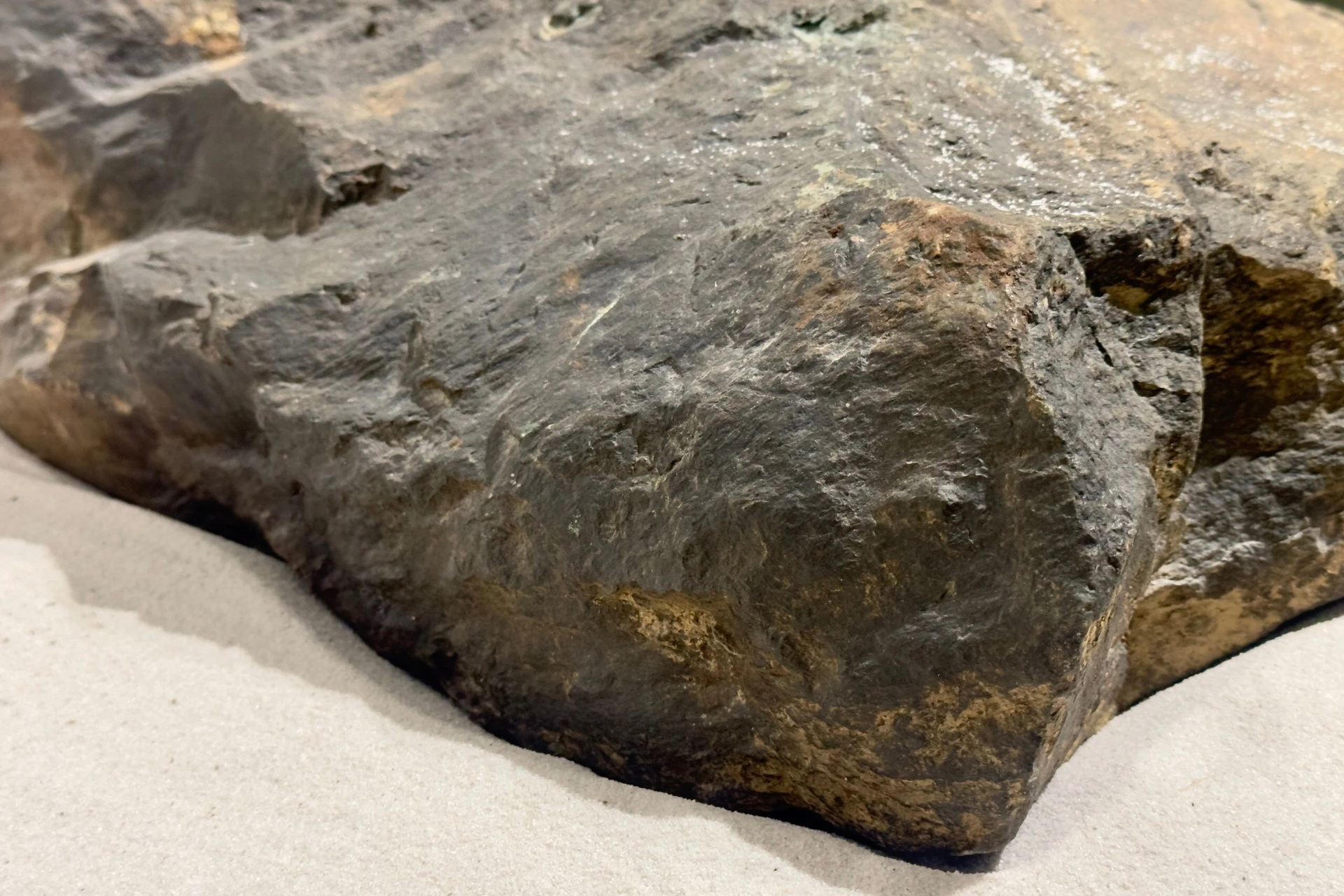 |
To determine the absolute age of the specimen, Associate Professor, Dr. Tran Ngoc Nam brought it to a modern laboratory in Japan, applying the U/pb isotope analysis method, one of the most sophisticated methods of determining age using radiometry with almost absolute accuracy. The experimental results showed an age of 2.936 billion years, belonging to the Mesoarkean era - the oldest rock age in Vietnam today. |
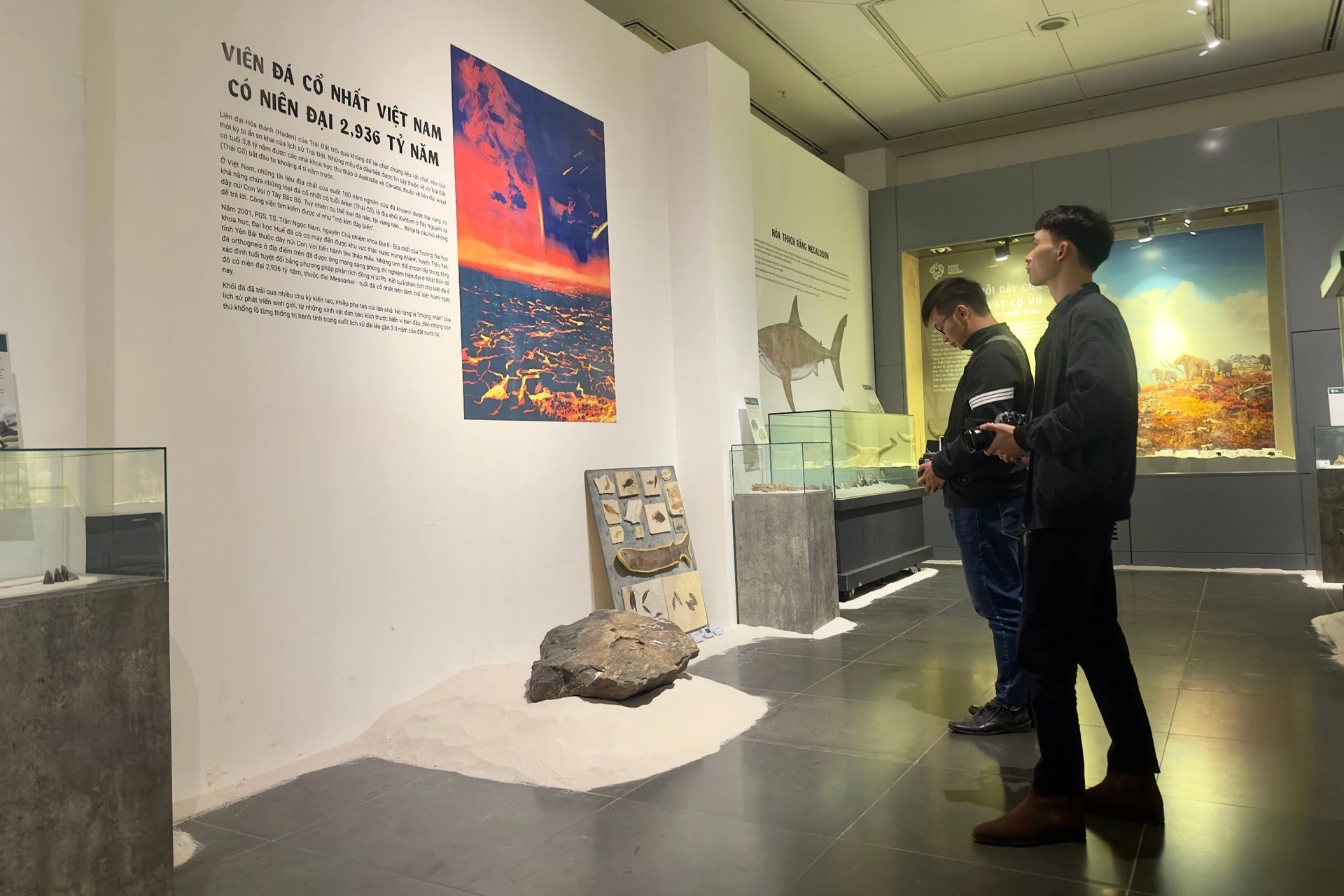 |
Sharing the same interest in archaeology, Minh Vu and Tai Vo (students of the Academy of Journalism and Communication) shared in amazement: "We were surprised and impressed by the stone. We did not expect that Vietnam would have a specimen of such a huge age." |
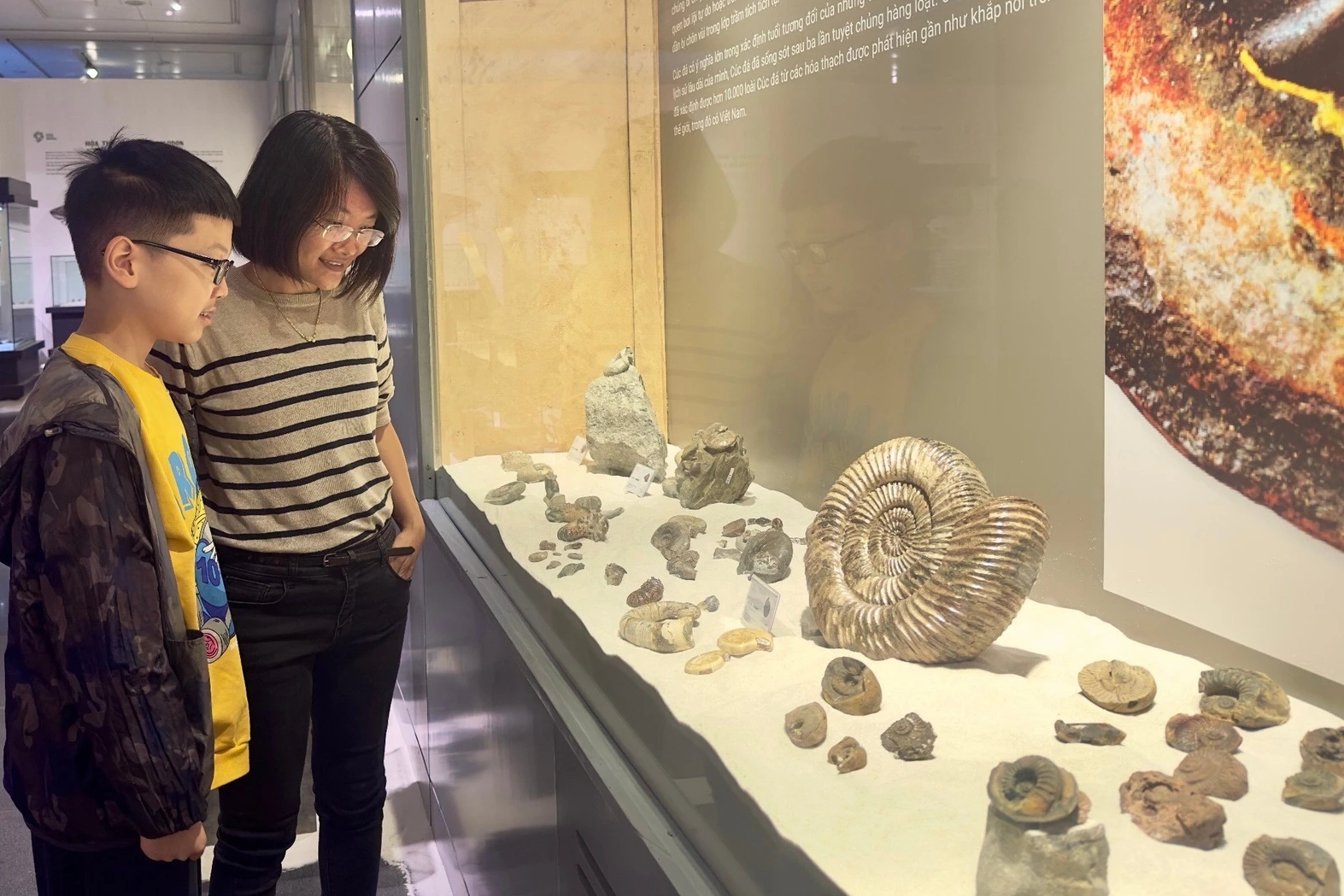 |
Having a passion for visiting museums to gain new knowledge, Ms. Dao Khanh (Hanoi) said: "When I was studying abroad in Germany, I was interested in learning about the stories of the exhibits in the museum. Today, I cannot help but be surprised and want to see with my own eyes the strange specimens, which are millions of years old to billions of years old, to better understand the history of the formation of the Earth. In addition, the collector has made me very impressed with his passion for archaeology, the cost, and the construction process for the public to see and understand more about the Earth. I think the entrance fee is not enough for this collection." |
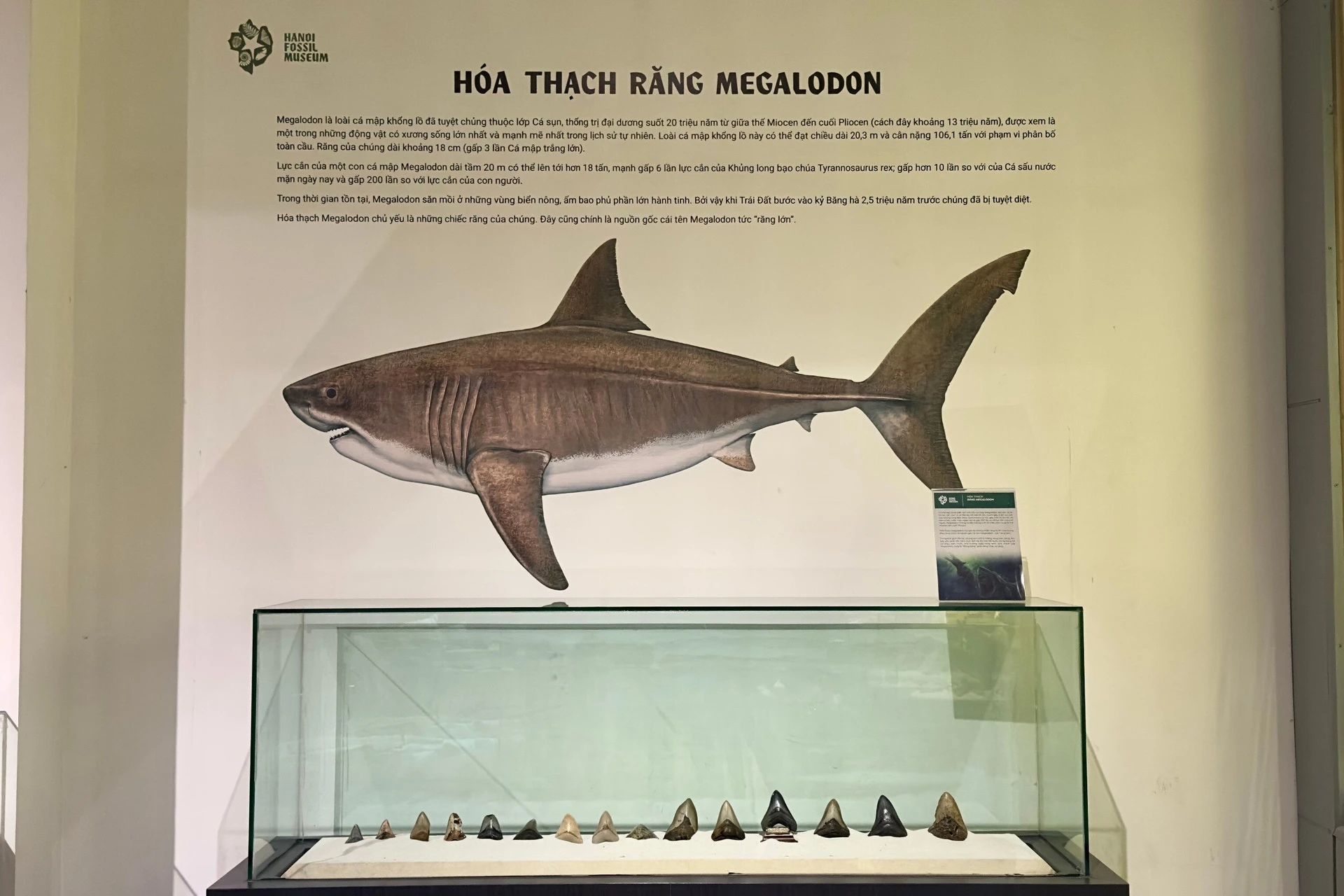 |
In addition, the fossil tooth of the Megalodon shark - the largest shark on the planet to date - is also on display. To this day, this "fierce beast" is still the subject of many filmmakers weaving horror and thriller works that haunt viewers. |
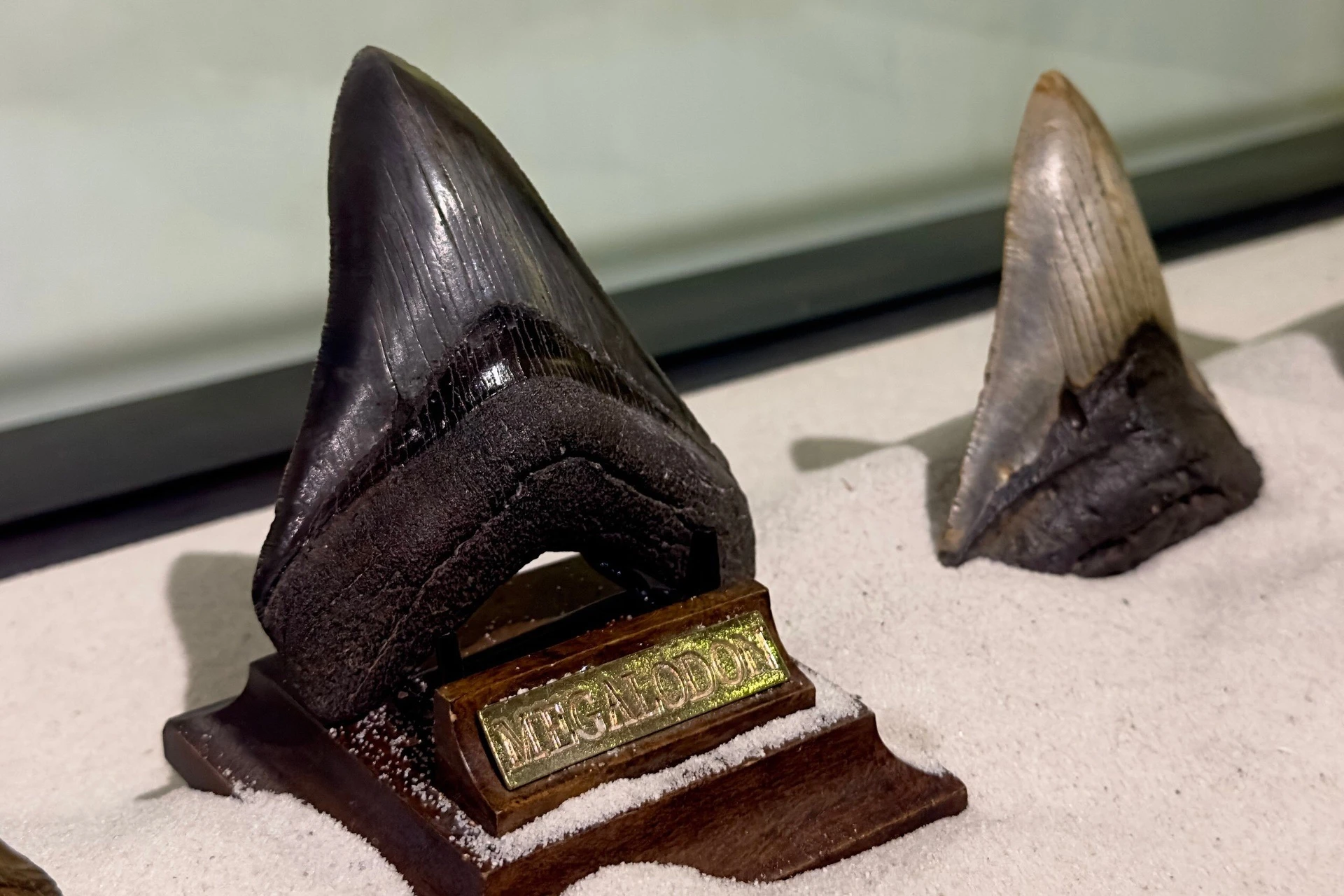 |
Fossil teeth of the super shark Megalodon, the bite force of this species can be up to 18 tons, 20 m long, about 6 times stronger than the tyrannosaurus rex and 200 times stronger than the bite force of a human. |
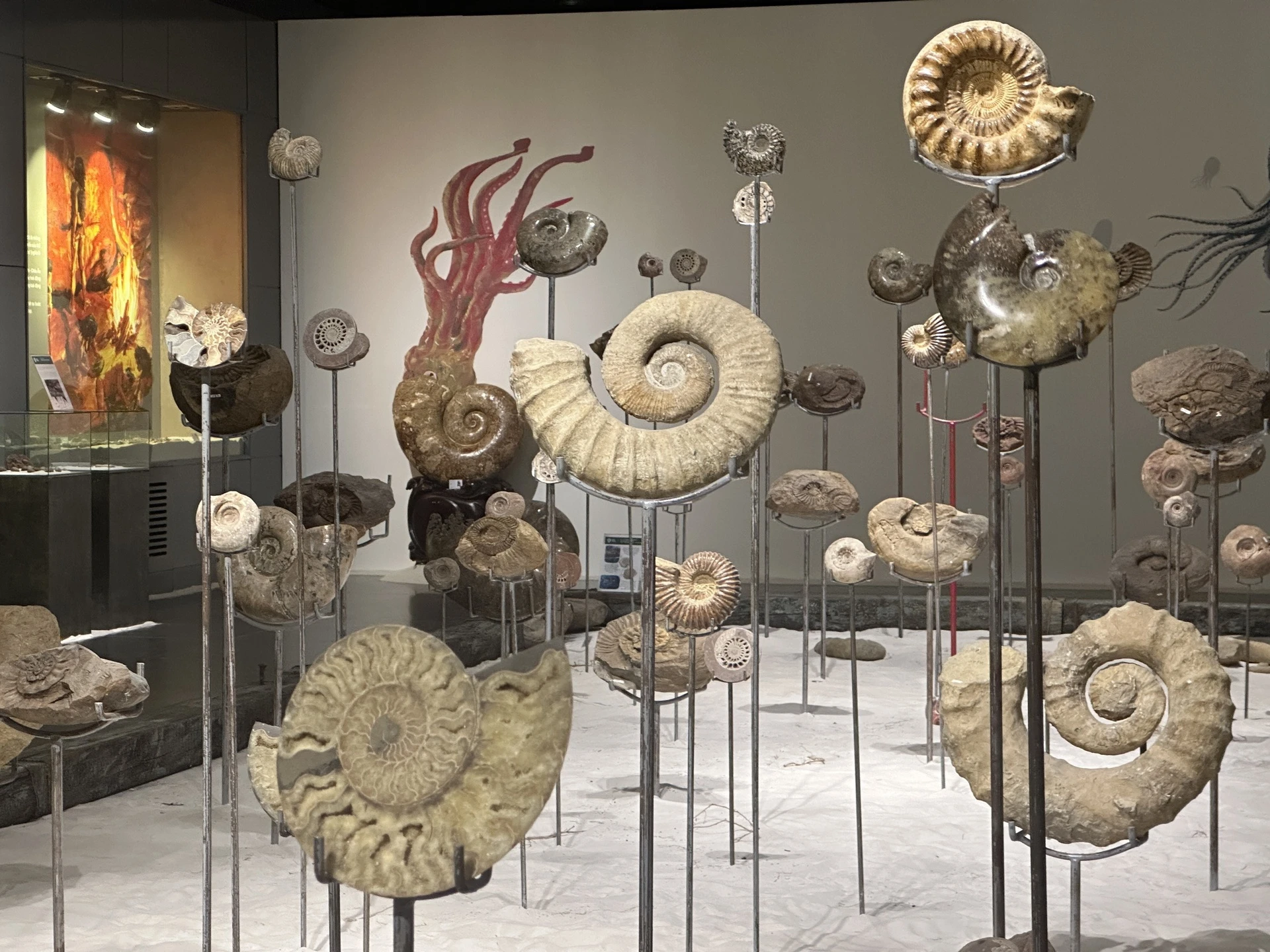 |
Hundreds of ammonite fossils are on display in the exhibition. Ammonites are a group of invertebrates, belonging to the class Caphalopoda, closely related to life forms such as octopuses and nautiluses. |
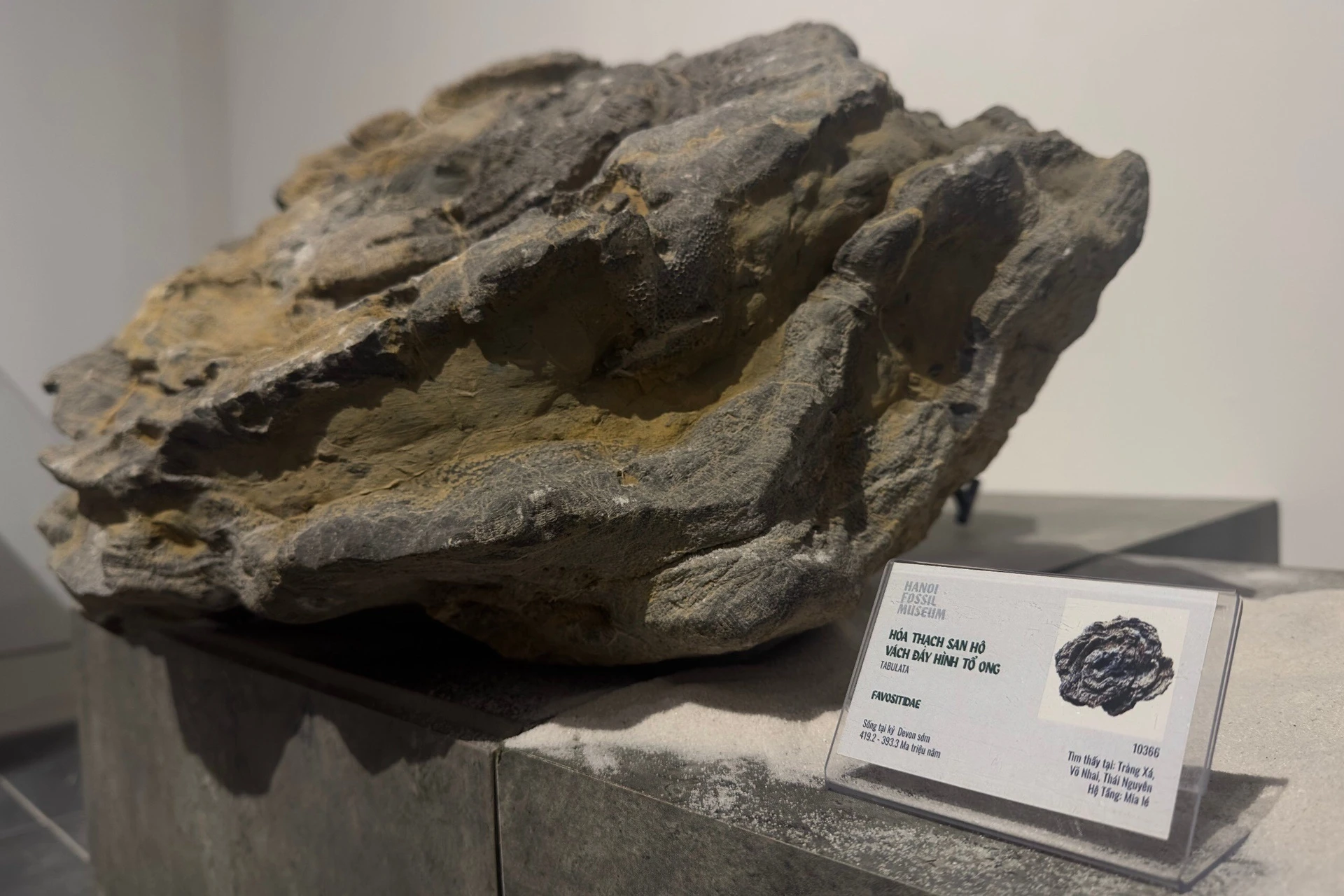 |
Ancient coral fossils are displayed in the exhibition, this is also a special fossil registered by the Hanoi Fossil Museum to become a National Treasure. |
 |
At the exhibition space of Hanoi Museum, nearly 1,200 fossil specimens are on display, serving visitors. The theme "Earth formation history through fossil collection" will be on display from November 2023 to May 2024. |
According to Zing.vn
Source












![[Motion Graphics] Things to note in the 10th grade entrance exam in Ha Tinh](https://vphoto.vietnam.vn/thumb/402x226/vietnam/resource/IMAGE/2025/6/2/1862624571b745329fa818efc4888f96)

















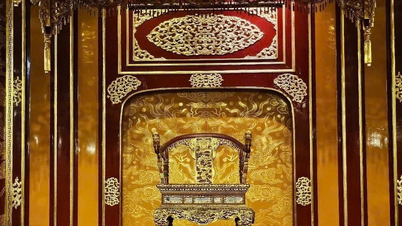



























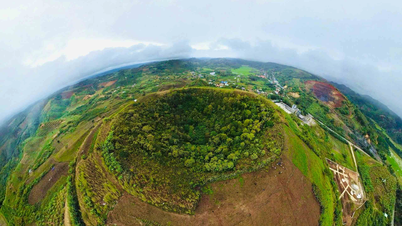






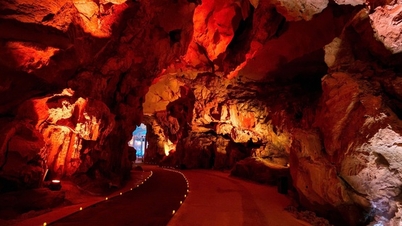






























Comment (0)